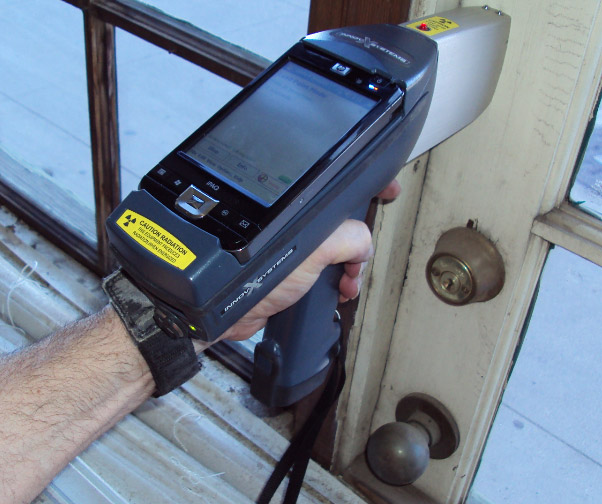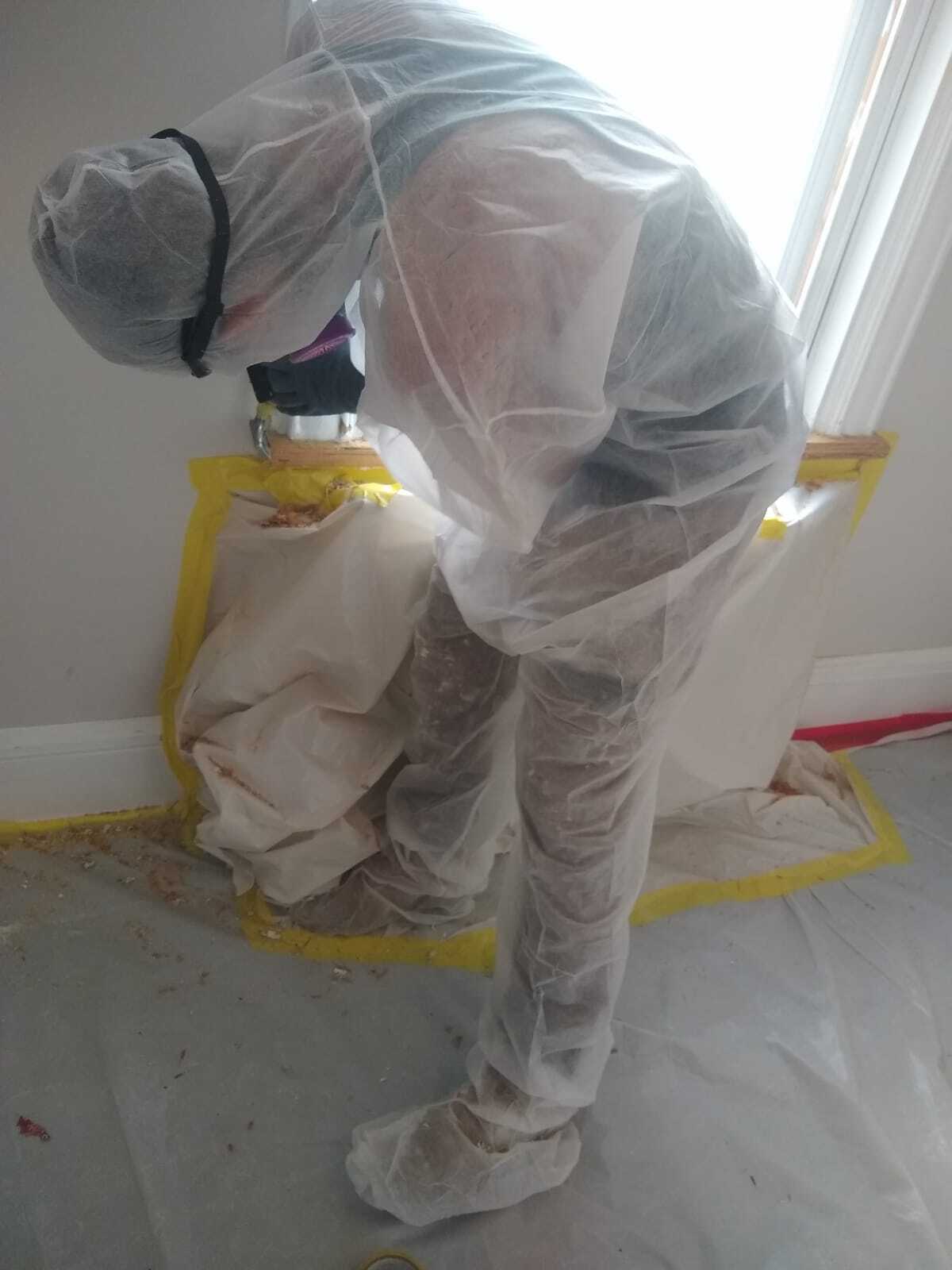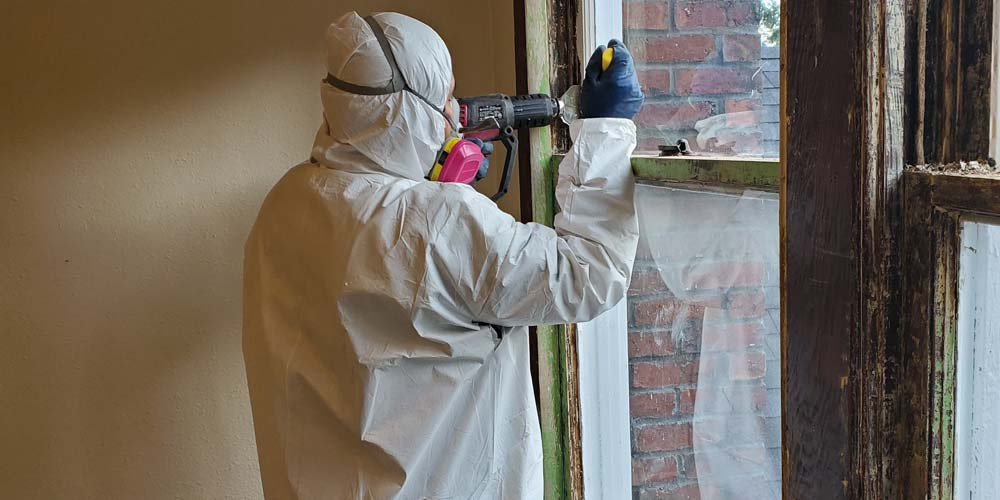Expert Lead Violation Removal in NYC-- Guard Versus Health Hazards
Expert Lead Violation Removal in NYC-- Guard Versus Health Hazards
Blog Article
Best Practices for Ensuring Safe and Comprehensive Lead Offense Abatement
Dealing with lead infraction abatement requires a multi-faceted strategy to ensure both safety and conformity. Preliminary evaluations using innovative detection methods such as XRF analyzers established the phase for an accurate understanding of contamination degrees. Integrating correct containment strategies, including impermeable barriers and HEPA purification, combined with making use of individual protective tools (PPE) for employees, develops the backbone of a protected procedure. Meticulous cleanup methods, featuring HEPA vacuuming and wet-wiping, are crucial. It's the last clearance process, including complete examinations and laboratory testing, that really validates a lead-free setting, guaranteeing lasting security. Just how do these methods adjoin to guarantee thorough lead abatement?

First Evaluation
Conducting a first evaluation is an important very first step in lead offense reduction. This phase incorporates an in-depth examination of the home to identify the visibility, extent, and details places of lead-based hazards. Certified professionals, such as certified lead assessors or run the risk of assessors, should carry out a comprehensive website assessment, using tools like X-ray fluorescence (XRF) analyzers to properly discover and determine lead focus in paint, dust, soil, and water.
The assessment has to additionally include a review of the building's background, previous reports, and any kind of grievances or health concerns reported by residents - Lead Removal Contractors. Recording the searchings for meticulously is crucial, as these records develop the basis for developing a reliable abatement method. A detailed evaluation also entails tasting and lab evaluation, which are critical to validate the visibility of lead and overview subsequent activities
Moreover, it is critical to connect the results transparently to all stakeholders, consisting of residential or commercial property proprietors, renters, and regulative authorities. By ensuring that the first analysis is carried out with accuracy and rigor, specialists can lay a solid structure for a targeted and effective lead abatement procedure, ultimately protecting public health and wellness and guaranteeing conformity with regulative standards.
Appropriate Control
Appropriate containment is critical to stop the spread of lead contaminants throughout abatement activities. Successfully taking care of control minimizes the risk of lead dirt and particles moving to non-work locations, thus protecting both the atmosphere and people outside the prompt job area. To attain correct control, an airtight barrier of plastic bed linen need to be developed around the workplace, ensuring all seams and edges are securely sealed. Lead Removal Contractors. This barrier ought to prolong from flooring to ceiling and be taped to stop any kind of leakages.

Routine inspections of the control area are needed to look for violations or weaknesses in the barrier. Any type of recognized problems should be immediately dealt with to keep the integrity of the control. By adhering to these methods, reduction projects can successfully control lead contamination and alleviate associated health and wellness risks.
Worker Defense
Guaranteeing employee protection is critical throughout lead abatement tasks to stop work-related exposure to harmful lead particles. Essential actions include making use of individual safety equipment (PPE) such as respirators, gloves, and full-body matches especially designed to block lead dirt and fumes. Employees need to undergo extensive training on the right use and upkeep of PPE, consisting of fit testing for respirators to guarantee optimum efficacy.
Engineering controls, such as regional exhaust air flow systems, are essential in decreasing airborne lead concentrations in the job setting. Administrative controls ought to additionally be executed, consisting of restricting the period of exposure and turning employees to decrease specific exposure times. Normal clinical surveillance and organic surveillance are essential for early detection of lead absorption, allowing prompt intervention and treatment.
In addition, developing a decontamination procedure is essential. Workers should follow rigid purification treatments prior to breaks and at the end of their shift to protect against lead dust from being brought outside the workplace. This includes comprehensive hand and face cleaning with lead-specific cleaner and transforming out of contaminated garments.
Thorough Clean-up
Keeping a safe work atmosphere extends beyond worker security and incorporates thorough cleanup to ensure lead bits are extensively gotten rid of from the site. The process of careful clean-up is crucial in avoiding i was reading this the recontamination of the eased off area and protecting both current and future occupants.
To achieve a comprehensive cleanup, all workplace should be methodically sanitized. This involves using specialized HEPA (High-Efficiency Particulate Air) vacuum cleansers and wet-wiping methods to record and eliminate fine lead dust that might have decided on surfaces. It is important to clean all straight surface areas, including floorings, window sills, and kitchen counters, in addition to upright surface areas that might have caught lead bits.
Workers need to wear appropriate individual protective equipment (PPE) during cleanup to avoid direct exposure to residual lead dust. Made use of cleansing materials such as wipes, sponges, and wipe heads must be taken care of according to contaminated materials disposal regulations.

Last Clearance
Final clearance is the essential concluding stage of lead abatement that identifies whether the site is secure for reoccupation. This important step involves thorough examination and testing to verify that all lead hazards have been effectively eliminated. The procedure starts with a visual evaluation by a certified lead-based paint inspector or risk assessor to make sure no visible dirt or debris remains. This is followed by gathering dirt wipe examples from different surface areas, including floors, windowsills, and various other horizontal surfaces. Lead Removal Contractors.

Final clearance testing not only safeguards future residents however also guarantees compliance with regional, state, and federal image source policies. Furthermore, it works as a recorded validation of the abatement professional's adherence to industry ideal methods. Guaranteeing a complete and effective last clearance is essential in protecting public health and wellness and cultivating trust in the reduction process.
Conclusion
Ensuring safe and thorough lead infraction reduction demands a multifaceted approach encompassing first assessments with advanced discovery approaches, reliable control methods, strict worker protection methods, and careful clean-up procedures. The final clearance phase, including thorough inspections and laboratory screening, is critical to verify conformity check it out with EPA standards. Adherence to these ideal methods guarantees a risk-free setting for residents, minimizes health and wellness threats, and supports governing demands, thereby advertising public health and security in lead-affected locations.
Report this page